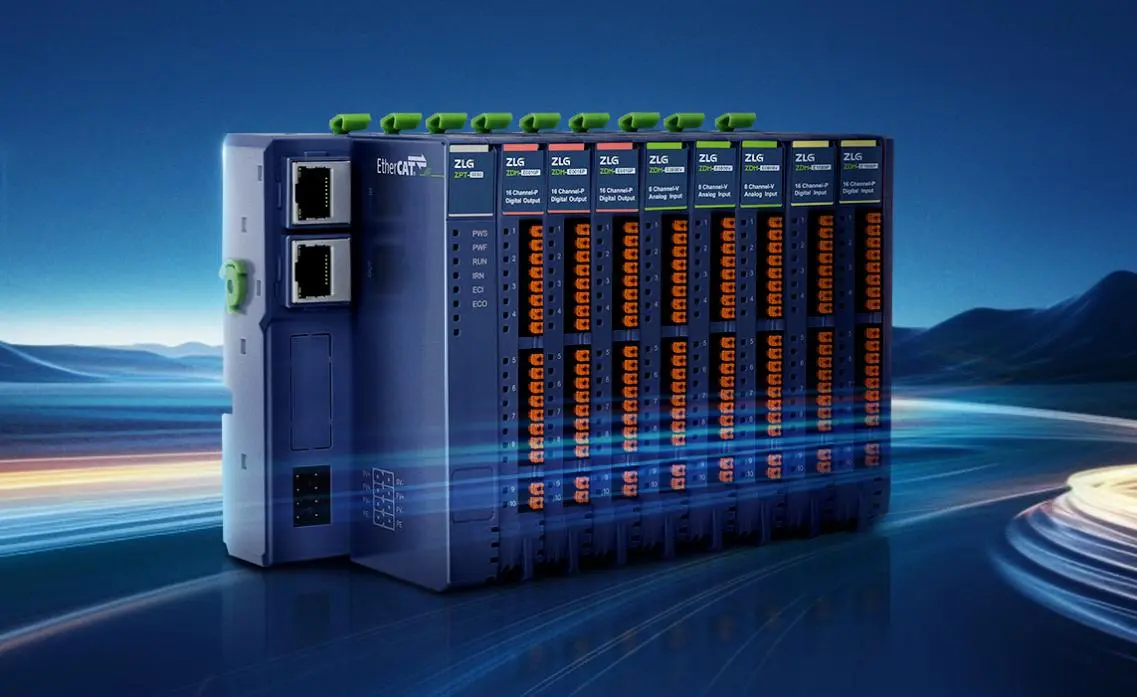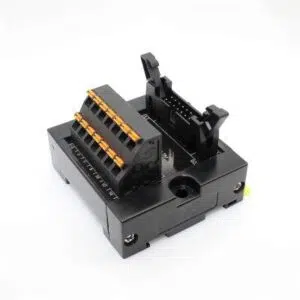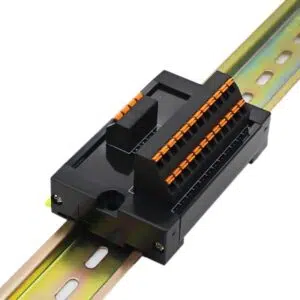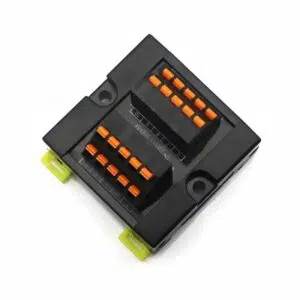This analysis examines terminal block for IO module in Ether CAT high-speed systems, covering: their critical role in industrial automation, performance comparison of next-gen ultra-thin vs legacy terminals, key procurement criteria, and future trends toward intelligent, high-density integration.
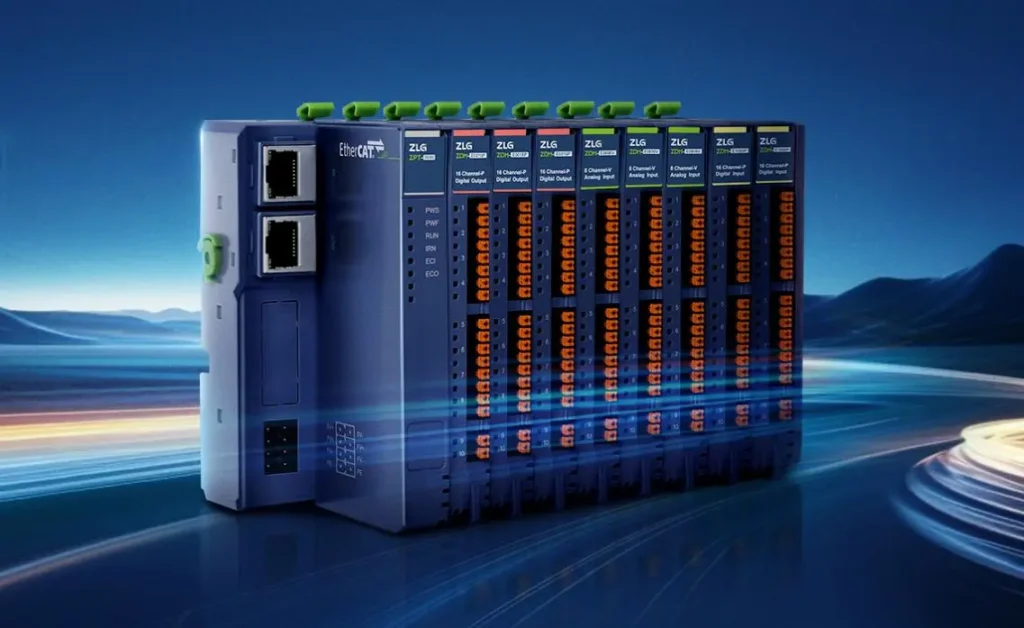
Designed for industrial engineers, system integrators, and procurement decision-makers.
Part 1: The Importance of Terminal Blocks in EtherCAT High-Speed I/O Modules
EtherCAT, renowned for microsecond-level real-time performance and high bandwidth, is widely adopted in smart manufacturing and robotics. As critical components in these systems, terminal blocks for IO modules serve as the ‘last centimeter’ of signal transmission, directly determining overall system reliability.
1.1 Mechanical Stability and Durability
In harsh industrial environments such as vibration, high temperatures, and humidity, the mechanical design of terminal blocks determines the system’s service life:
Anti-Vibration Design: Spring-type terminals (e.g., screwless XD series) offer 50% better vibration resistance than traditional screw terminals, making them suitable for dynamic applications like AGVs and robots.
Corrosion Resistance: Terminals using flame-retardant PA66 housings or gold-plated contacts resist salt spray and chemical corrosion, extending lifespan.
IP Protection: IP67-rated terminals prevent dust and moisture ingress, ideal for outdoor or high-humidity applications.
1.2 Space Optimization and Maintenance Efficiency
With the trend toward device miniaturization, terminals must balance high-density layouts with ease of maintenance:
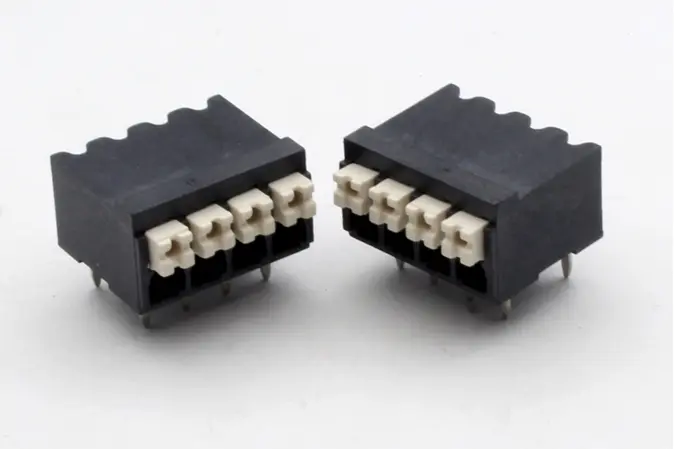
Ultra-Slim Design: Next-generation terminals can reduce thickness to 7.7 mm (compared to 8.5 mm for older versions), saving space and suiting compact I/O modules (e.g., ZLG’s 16-channel modules).
Hot-Swappable Capability: Modular terminals (e.g., plug-in types by Emar Smart) allow replacements without power shutdown, cutting downtime by up to 70%.
1.3 Long-Term Stability and Cost Control
Maintenance-Free Design: Traditional screw terminals are prone to rust and poor contact. In contrast, spring terminals feature tool-free installation and self-locking mechanisms, reducing maintenance frequency.
Wide Temperature Adaptability: Designs rated from -40°C to +125°C ensure stable operation in extreme environments, lowering failure rates.
Part 2: Legacy vs. Next-Gen Ultra-Thin Terminal Blocks: Why Upgrade?
In industrial applications, particularly for compact EtherCAT IO modules, the need for space-efficient connectivity has driven innovation in terminal block for IO module. The newly upgraded ultra-slim design delivers these key advantages over traditional models:
1. Core Product Advantages (Based on FS1.5-XX-500-12)
The AOSI FS1.5-XX-500-12 ultra-thin terminal block, which we are now promoting, represents a revolutionary breakthrough for EtherCAT high-speed I/O module applications:
1.1 Extreme Space Optimization
Industry-leading thinness: At just 7.7mm in thickness (compared to traditional terminals typically ≥8mm), it is one of the thinnest SMD terminals on the market, saving over 60% vertical space.
Unique design: The unique structure supports mixed wire gauges of 1.5mm² and 2.5mm², enabling high-density PCB layouts (e.g., reducing the size of a 32-channel DI module by 40%).
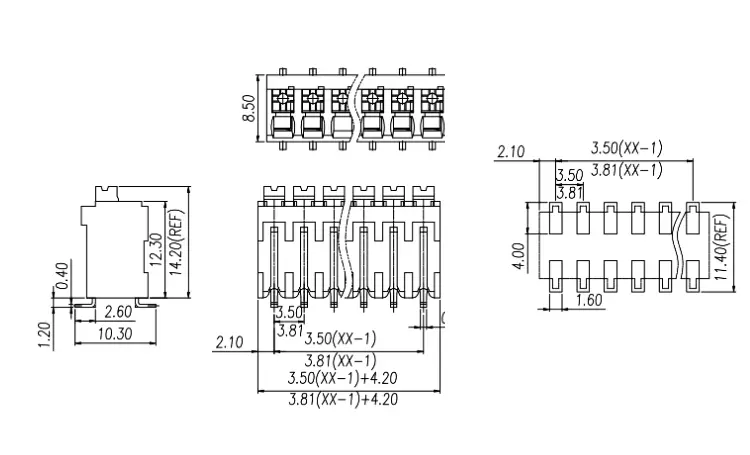
1.2 Military-Grade Reliability
Vibration resistance: Complies with IEC 60068-2-6 standards (5-500Hz/15G random vibration), offering 3x better shock resistance than traditional terminals.
Gold-plated contact system: Contact resistance <2mΩ (industry average: 5mΩ), ensuring zero signal distortion for EtherCAT 100Mbps transmission.
Wide temperature range (-40°C to +105°C): Uses specialized PPS material, maintaining insulation resistance >100MΩ even at high temperatures.
2. Technical Comparison: Legacy vs. New Terminals
| Key Metric | Legacy Terminals | SPT SMD 1.5/2-H-3.5 R24 | Upgrade Benefit |
|---|---|---|---|
| Mounting thinnest | 10mm | 7.7mm | 60% space savings |
| Vibration Resistance | 5G (IEC 60068-2-6) | 15G | Enhanced suitability for industrial robots |
| Installation Method | Manual soldering | Fully automated SMT mounting | 80% higher production efficiency |
3. Key Benefits of Our Ultra-Thin Terminals
- Space Savings — Ideal for high-density EtherCAT I/O modules.
- Superior Signal Integrity — Gold-plated contacts ensure <2mΩ resistance.
- Industrial Durability — Withstands -40°C to +105°C.
- Smart Manufacturing Ready – Compatible with SMT assembly, reducing production costs.
4. Try Before You Buy — Free Samples Available!
We understand that reliability is non-negotiable in industrial automation. That’s why we offer:
- Free Samples — Test our ultra-thin terminals risk-free.
- Technical Support — 1-on-1 guidance for seamless integration.
- Lifetime After-Sales Service – From installation to troubleshooting, we’ve got you covered.
- Contact us todayto request your free sample or discuss customization options!
Part 3: Industry Future Trends: Intelligent and High-Density Integration
With the rapid development of Industry 4.0, the Internet of Things (IoT), and artificial intelligence (AI), terminal block technology is evolving toward intelligence and high-density integration:
1. Intelligence: From Passive Connection to Active Sensing
Future terminal blocks will no longer be simple electrical connectors but smart components capable of data acquisition, status monitoring, and self-diagnosis:
Embedded Sensor Technology
Integrated temperature, current, and vibration sensors for real-time monitoring of connection status (e.g., contact resistance changes, loosening warnings).
Example: Phoenix Contact’s Smart Terminal Block can upload data to the cloud via IO-Link for predictive maintenance.
2. High-Density Integration: Smaller, Faster, Stronger
To meet the demands of device miniaturization and high performance, terminal technology will break traditional space constraints:
Stacking and Miniaturization
Multi-layer stacked terminals support 2-3x more channels in the same footprint.
Ultra-thin designs (<2mm thickness) cater to emerging needs like wearable devices and micro-robots.
3. Green Manufacturing and Sustainability
Environmental regulations (e.g., EU RoHS 3.0) are driving terminal technology toward low-carbon solutions:
Bio-Based Materials
Use of PA410 bioplastics reduces carbon footprint by 40% while maintaining flame resistance (UL94 V-0).
Halogen-Free Designs
Replaces traditional PVC materials, complying with IEC 61249-2-21 standards.
Modular Recycling
Quick-disassembly designs improve copper/plastic recovery rates to over 95%.
Conculsion:
As EtherCAT high-speed IO modules advance toward miniaturization and intelligence, ultra-thin terminal block for IO module have emerged as critical components for enhancing system performance. Selecting terminal solutions that combine EMI resistance, space efficiency, and scalability will provide companies with a competitive advantage in Industry 4.0 applications.

